A good night’s rest is priceless. No one understands this more than someone who is not routinely getting it.
Smart use of pillows and props can go a long way toward preparing the body to accept deep, restful sleep—regardless of what positions you typically prefer.
Back Sleeping
The biggest mistake people make in back sleeping is trying to lie flat. There’s nothing flat about a human body, and embracing where we bend and curve is the easiest way to make back sleeping blissful.
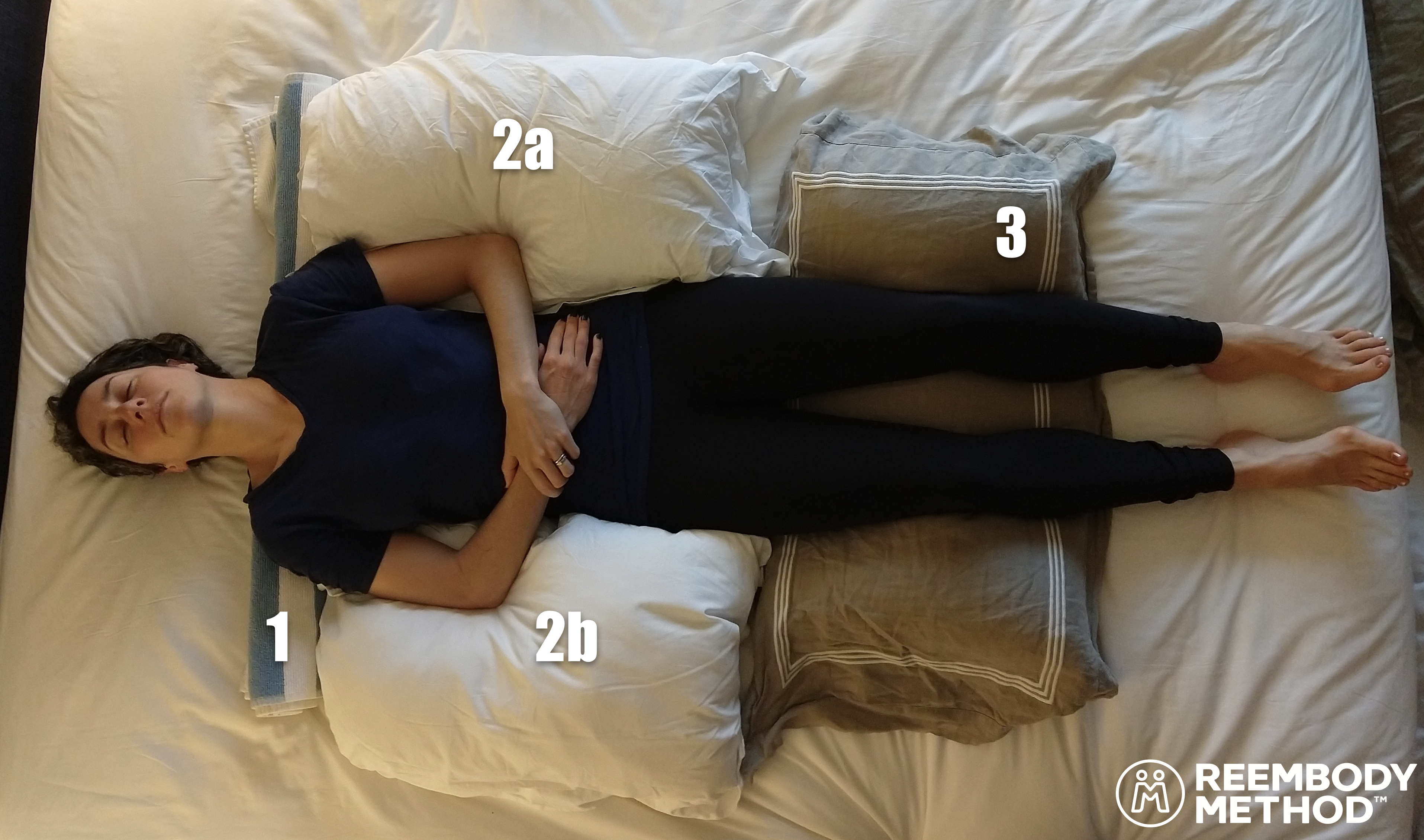
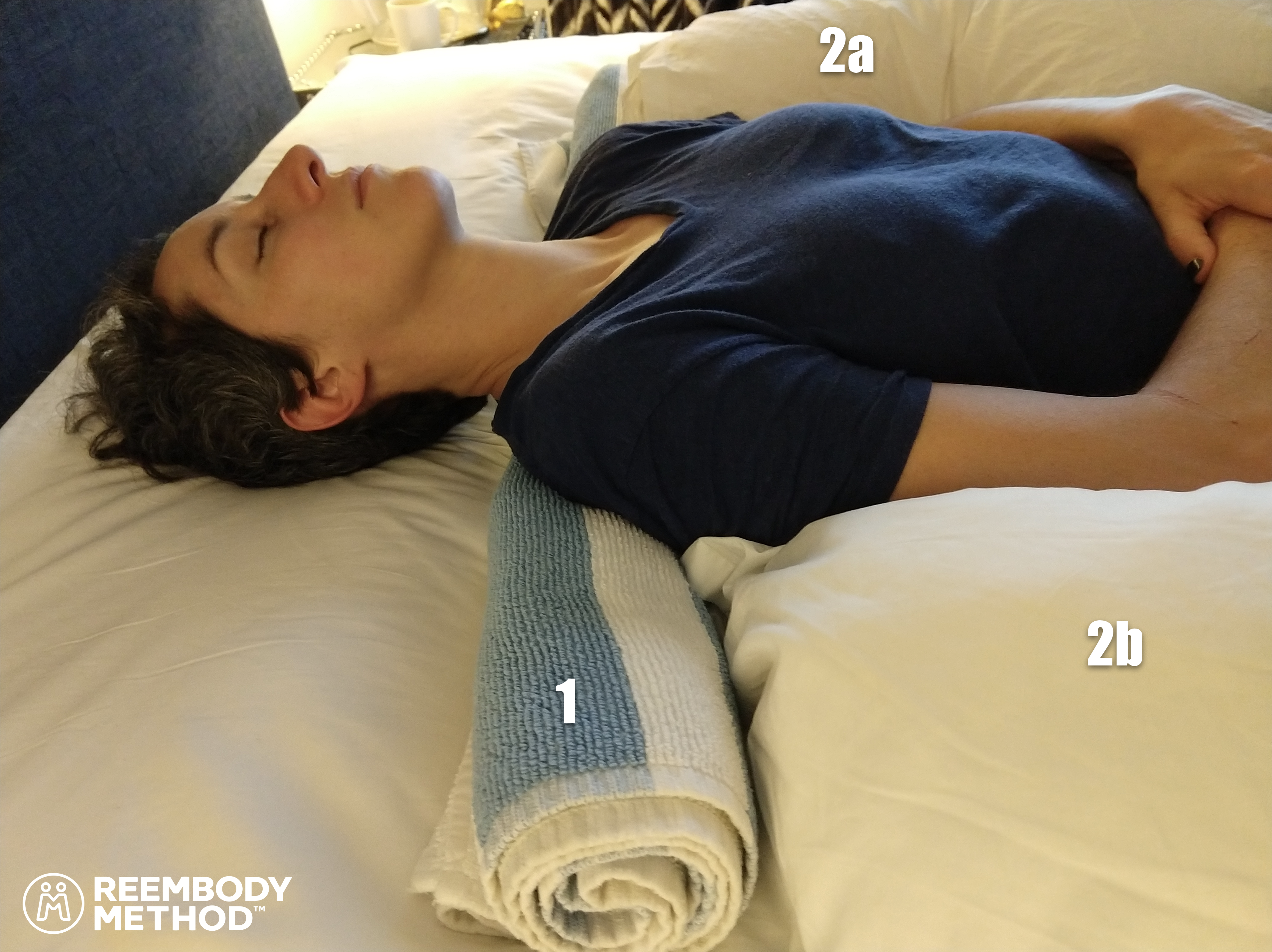
(1) See that rolled up towel beneath the upper shoulder? This piece allows both the upper back and, most importantly, the neck, to have their natural structural curves. If you’ve ever been to a CPR class you’ll recall that before mouth to mouth you must tilt the head back to open the airway. So why would we restrict our airway with a pillow under our heads when we sleep?
Note: some folks like to place a rolled towel directly under the neck, but I find that allowing the neck curve to be both open and supported is a better solution for easy nighttime breathing.
(2a/2b) Emphasizing flatness in the shoulders will also get you in trouble. Raise the elbows and allow the shoulders to passively lay inward to take a lot of strain off the spine, neck and jaw.
(3) Get those knees into a gentle bend for quick relief of hip and low back tension.
Dominant Side Sleeping
Surprise! The rules for sleeping on the dominant and non-dominant side of the body are different! For this section, use your dominant hand—the one you would throw a ball with—as a guide for which side of the body is against the bed.
Note: the model pictured is right-dominant.
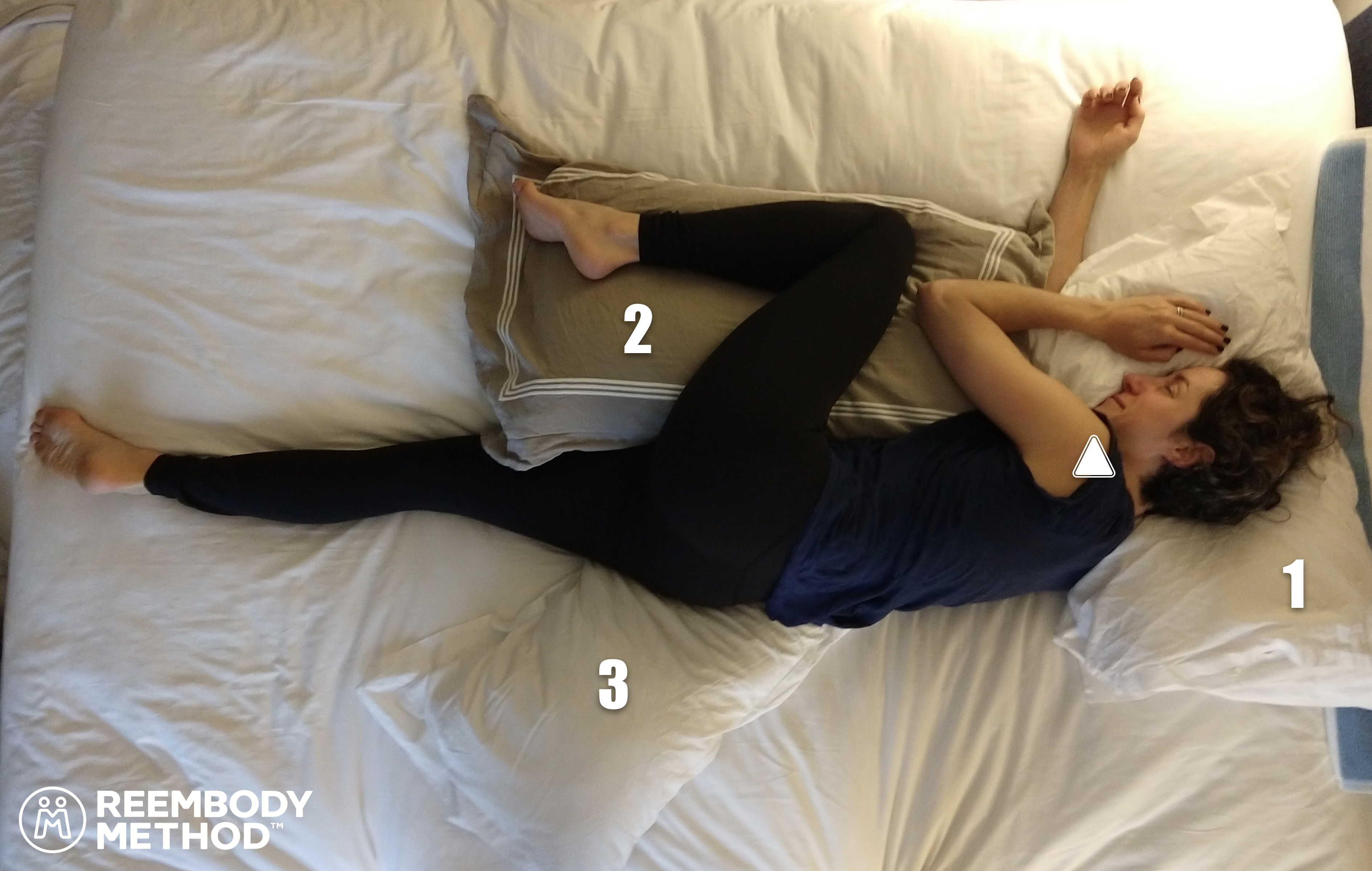
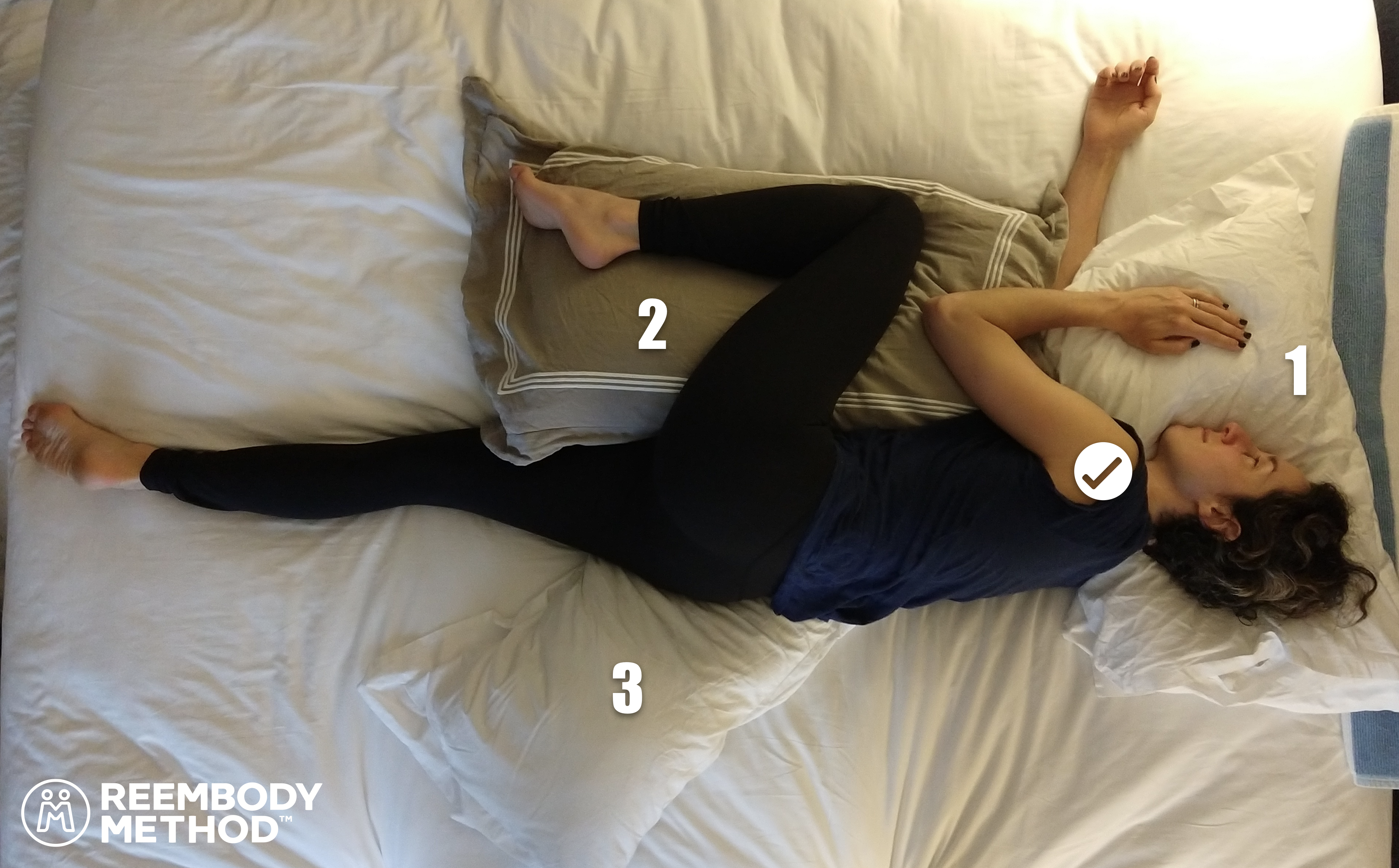
(1) Here’s a position where a pillow under the head is great. In fact, focus on really letting the head sink into the pillow.
(2) The non-dominant leg (the one on top) will feel like it’s being pampered if it’s in deep flexion (drawn up toward the chest) and sinking into a pillow of its own.
(3) contrary to the non-dominant leg, the dominant hip (the one against the bed) will get cranky if it feels like it’s sinking. Putting a little extra support between the dominant hip and the bed often creates a pleasant feeling of ease and openness in the low back.
Watch out! We still need an open airway even in side sleeping. It’s tempting to adopt a fetal curve to the neck, but aim for a neck tilt that provides the lungs with wide-open access to air.
Non-dominant Side Sleeping
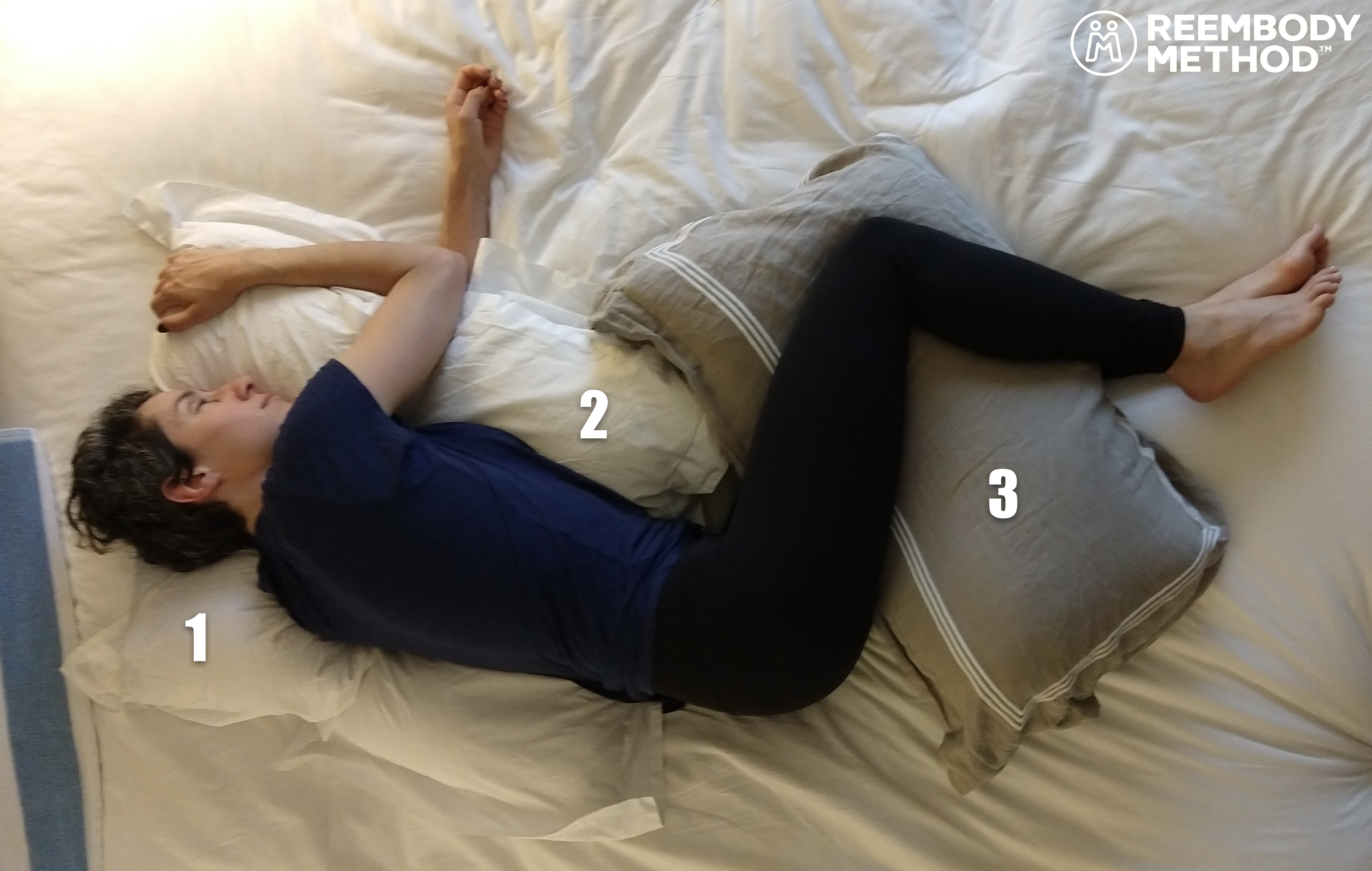
(1) Here’s another lovely place to put a pillow under the head.
(2) The non-dominant side of the body has a tendency to stretch long, making it harder for the lung on the non-dominant side of the body to exhale completely. A supportive pillow under the ribs allows the pelvis to sink below the level of the rib cage, passively shortening those overstretched spaces. Deeper, easier breathing is a common result.
(3) The dominant leg (the one on top, here) has a tendency to grip in the inner thigh. Placing a supportive prop between the legs helps to interrupt that gripping behavior, keeping the dominant leg light and happy.
Stomach Sleeping
Stomach sleeping gets a bad rap, but it can be a very comfortable, secure position. With the right props, it doesn’t have to tax the neck and low back.
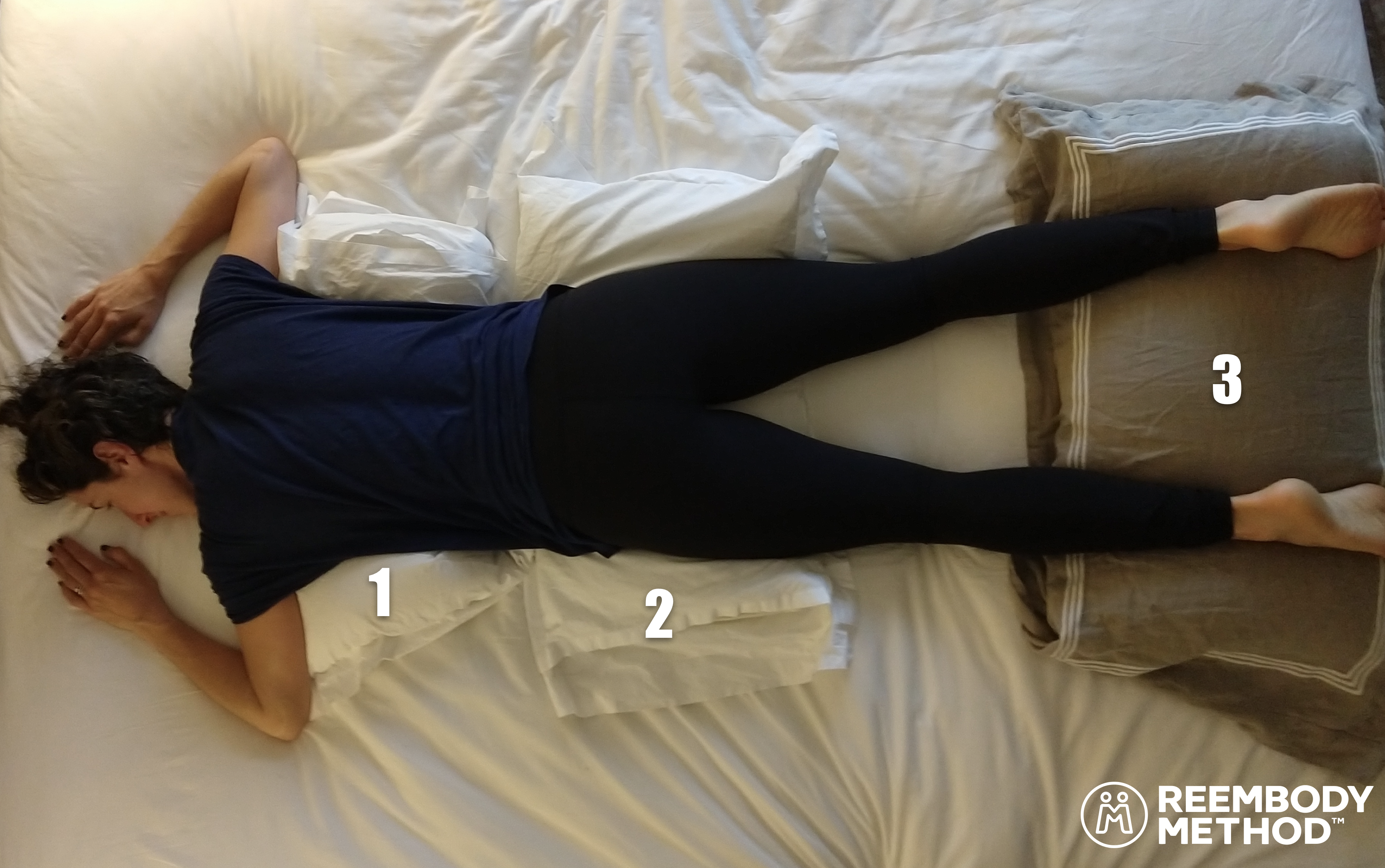
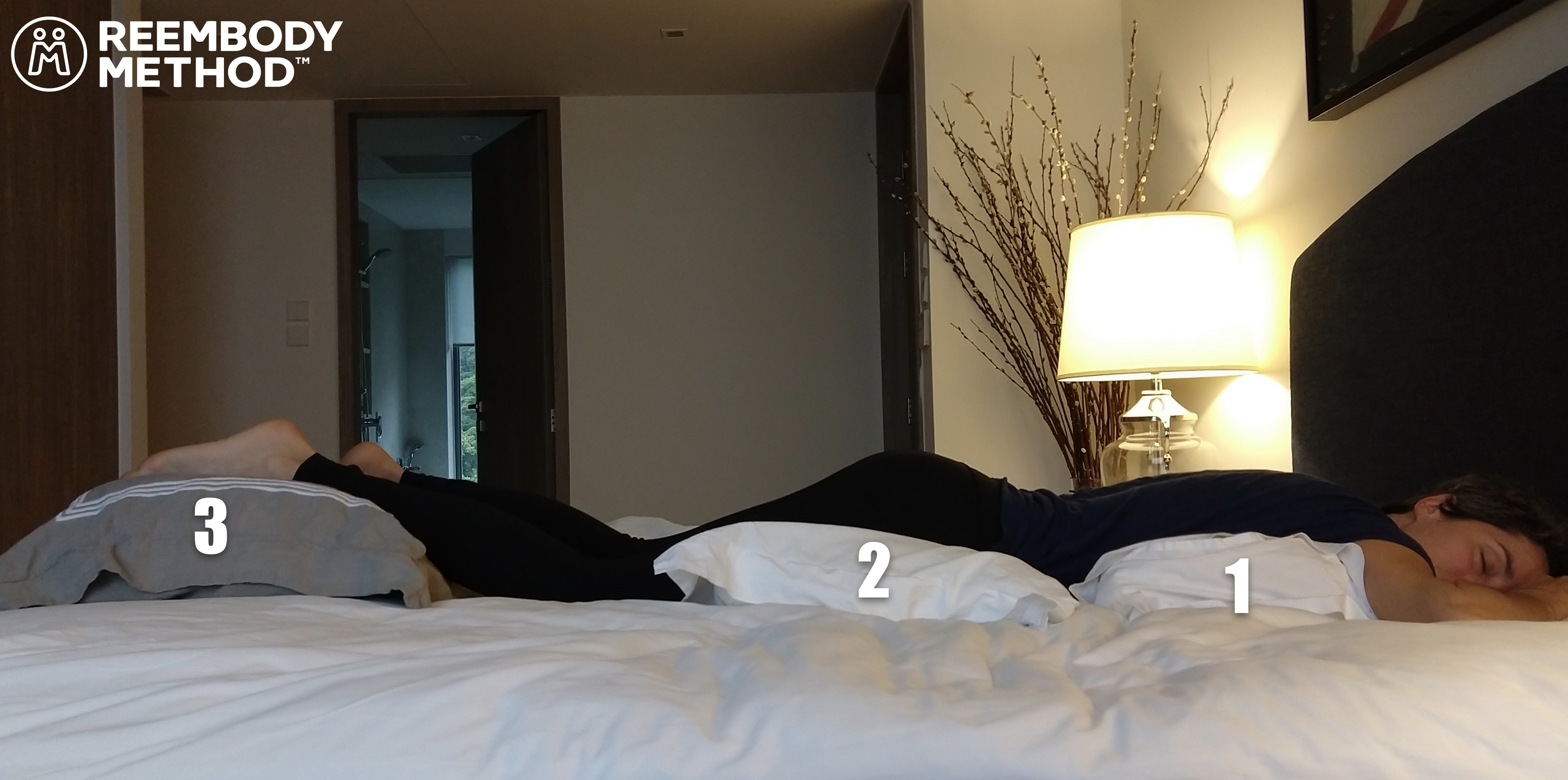
(1) Like back sleeping, the head pillow is out. Instead, prop the chest so that the head and shoulders spill over the front of the pillow. This supports the natural curvature of the upper back, leaving the head to rest heavy on the bed.
(2) The hips, too, need extra support here to protect the natural curvature of the low back and prevent the muscles of the hips from bracing against the bed.
(3) A lift under the feet and ankles creates a luxurious, passive bend in the knees. This allows the whole leg, including the hip, to be less tense and more adaptive to little changes in position throughout the night.
Sleep well and feel free to share your experiences in the comments!

Sandra Tambini
Hm… I didn’t realize I already “do the side sleep” correctly. That might explain why I’m so happy when in that position – as opposed to every other hour of the day. Sad, but true.
Heather Struckman
Great visuals. Very helpful information. Dominant side sleeping has always been good for me, although I am interested in trying a couple of these others with proper support. Thanks!
Stephanie Christenson
This makes so much sense! These pictures are very helpful and well thought out. As a side sleeper, I sleep very differently on each side. Do they make something bigger then a CA King 😉. Thank you!
Joy
Tried them all out and can confirm they are ridiculously comfortable. I may or may not have snoozed a little while I was at it. Now I just have to convince my husband to sleep on the couch so there’s room in the bed for all my pillows!